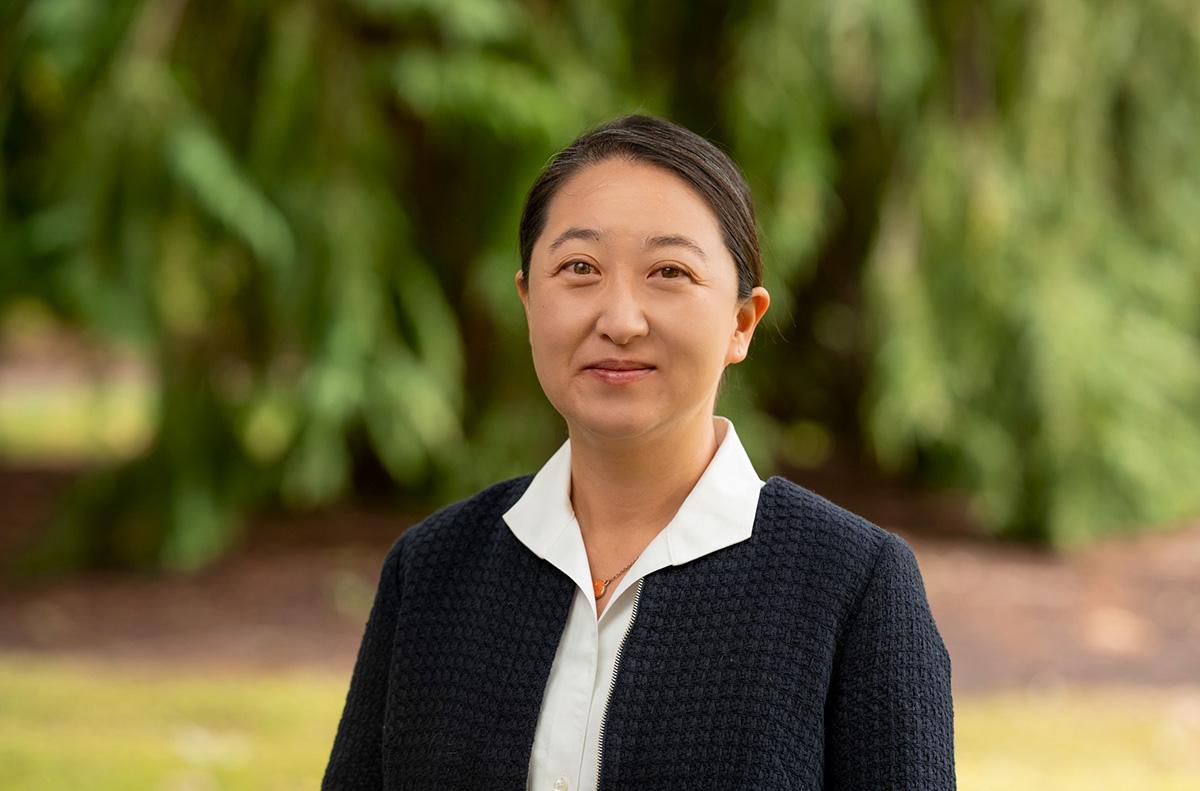
By Jina Kim, Associate Professor, East Asian Languages & Literatures
In recent years, Korean TV dramas have become a significant presence on the international television circuit, so much so that some of the most watched shows on over-the-top (OTT) platforms are Korean TV dramas. The Netflix-produced Korean drama Squid Game (2021) and The Glory (2023) are just two of many that have received critical and widespread acclaim, bringing much attention to Korean dramatic storytelling texts. However, what often gets overlooked in these televisual texts are the scenarists who pen these successful stories, many of whom are women writers.1 In fact, South Korea has a long list of illustrious women scenarists who have contributed to the development of mass media dramatic storytelling that began with radio dramas in the early twentieth century and continued into the mid-century. One of the early contributors is Chang Tŏkjo (1914–2003).
With the support of the CSWS Faculty Research Grant, I conducted archival research on Chang Tŏkjo’s life and work, which is part of my larger project on the cultural history of Korean radio and radio texts. During my three-week research period, I attempted to track down Chang’s many writings, especially those she wrote for the radio, often labeled as “pangsong sosŏl” (radio or broadcast fiction) in the 1950s. Two of her short stories, “Sonagi” (“Rain Shower”) and “Chilt’u” (“Jealousy”), were published in the magazine Pangsong (Broadcast) (September and December 1956, respectively). Prior to its publication, “Rain Shower” aired on Seoul’s HLKA Radio on August 24, 1956, at 8:00 PM. Chang’s long fiction Changmi nŭn sŭlp’ŭda (The Sad Rose) was also broadcast in a serialized format from Dec. 1, 1956, to Jan. 26, 1957. It appears that, based on Tong’a and Kyŏnghyang newspapers’ published radio program schedules, each segment was about fifteen minutes long, lasting from 6:30 p.m. to 6:45 p.m. Due to its popularity, The Sad Rose was subsequently published in a novel format in 1957 and then adapted into a film in 1958.
Chang’s works were broadcast under the programming categories of “nangdok sosŏl” (fiction recitation) and “yŏnsok nangdok” (serialized fiction recitation). To be sure, the recitation of short stories and novels is not new and has been central to Korean radio programming since the official start of radio in 1927 in Korea. What is notable, however, is that Chang Tŏkjo wrote her stories specifically for radio broadcasting with attention to the oral-aural medium in mind. I imagine these programs are similar to audiobook reading or story reading hours in today’s radio or podcast programs. However, it significantly differs from simply reading out loud or performing an already-published story on the air. Additionally, unlike radio dramas, which also had a prominent place in radio programming and production, radio fiction differed in its form. For example, radio fiction required greater sensitivity to balancing dialog and description, unlike radio dramas which depended more on dialog. Unfortunately, for scholars studying radio texts from the first half of twentieth-century Korea, the audio recordings are not extant; thus, we can’t listen to the performances. Hence, what we rely on to “listen” are the printed materials. Yet, I would argue that since radio performances begin with a written script, the writer’s work and the texts they craft are significant materials to begin the investigation. Chang Tŏkjo’s works are particularly meaningful because the three texts mentioned above were written specifically for the radio.
Despite Chang Tŏkjo’s long and prolific writing career that spanned most of the twentieth century, she has not received as much attention from scholars of Korean women’s literature or by Korean literary critics. One of the reasons for this neglect stems from the assessment that Chang is often considered a female writer of “popular literature” who penned serialized newspaper romance novels. Likewise, although her writing career began in 1932 when she worked as a reporter for Kaebyŏk (Creation, 1920–1935), a progressive, nationalist magazine that led the New Culture Movement in Korea, her career has been clouded because of propaganda literature that she wrote during the 1940s, which supported Japan’s war mobilization in the Asia-Pacific.
In my project, I shift the analytical lens to gender and sound to investigate the ways female voices were situated in both private and public spaces of writing for the radio and listening to the radio to demonstrate the intimate link between gendered voice and sonic modernity during the chaotic twenty years that bridged the Japanese colonial period and post-Korean War period—roughly from 1940 to 1960. Thus, studying Chang Tŏkjo’s radio novels presents exciting possibilities to ask about various beginnings of postwar mediascape, transmedia literary productions, the formation of postwar gender ideologies, radio technology, and radio aesthetics. More importantly, Chang’s literary oeuvre allows us to rethink the history of Korean women’s literature, feminist criticism, and feminist politics, which has primarily omitted women writers like Chang, who wrote for radio, television, and film.
—Jina Kim is an associate professor of East Asian Languages & Literatures. She received a 2021 CSWS Faculty Research Grant for this project.
Endnotes
1 For instance, the writer of The Glory is Kim Ŭnsuk (1973–), who also wrote top-rated TV dramas such as Descendants of the Sun (2016), Mr. Sunshine (2018), Secret Garden (2010), Lovers in Prague (2005), and Lovers in Paris (2004), among many others. Kim Suhyŏn (1943–) began her work as a radio drama scenarist with Chŏ nunbat’e sasŭmi (Deer in the Snow Field, 1969). She subsequently adapted the radio drama into a film the same year. Kim has gone on to write numerous TV dramas, including Tu yŏja (Two Women, 1992), Ch’ŏngch’un ŭi tŏt (Trap of Youth, 1999), and more recently Kŭrae kŭrŏn’gŏya (Yeah, That’s How it Is, 2016).

